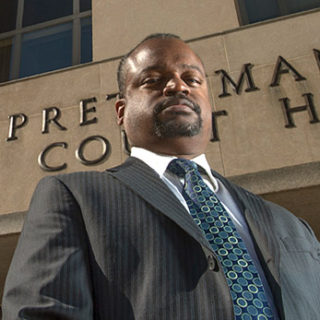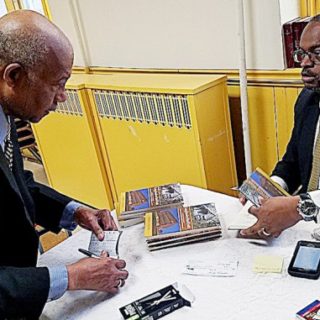The 100-Year Mission To Create
The National Museum Of African American History And Culture
By Robert L. Wilkins
A Museum Much Delayed

Mary Church Terrell founded the National Association of Colored Women and was a co-founder of the NAACP.
Mary McLeod Bethune founded Bethune-Cookman College and the National Council of Negro Women.
Paul Revere Williams designed Los Angeles International Airport and became the first African American fellow of the American Institute of Architects.
John R. Hawkins was president of Prudential Bank and the Association for the Study of Negro Life and History, the organization founded by Carter G. Woodson, the creator of Negro History Week and the inspiration for Black History Month.
These African American history makers worked nearly 75 years ago to give black achievement a permanent place in the nation’s capital, not just a place on the calendar. Their efforts are back in focus now that plans are underway for the establishment of the first National Museum of African American History and Culture in Washington.
In December Congress formed a presidential commission to develop a plan to build the new museum on or adjacent to the Mall. The commission will deliver its report to Congress and the president next month. Congress is expected to approve the plan and provide funding for a public-private partnership for its construction.
The story of the museum’s gestation is worth revisiting. In 1929 President Herbert Hoover appointed Terrell, Bethune, Williams and Hawkins, along with eight other African American leaders, to a commission to build a “National Memorial Building” in Washington “as a tribute to the Negro’s contribution to the achievements of America.” The building was to be “suitable for meetings of patriotic organizations, public ceremonial events, the exhibition of art of inventions, and placing statues and tablets.”
As with other signal events in African American history, the movement to build the memorial began with a march. In 1915 veterans of the Union Army gathered in the capital to celebrate the 50th anniversary of their triumphant parade down Pennsylvania Avenue that followed the end of the Civil War. The “colored troops,” however, had not been invited to participate in the original 1865 march, so the occasion was bittersweet for African American veterans.
These veterans also faced so much discrimination and segregation during their 1915 visit to Washington that the Baltimore Afro-American asked, “What has these 50 years brought of fame or honor to them that they might feel proud that they once fought for a grateful country?”
Shortly after the parade, a “colored citizens’ committee” established for the occasion wrote to President Woodrow Wilson of its intention to build a memorial to African American achievement in Washington. The committee’s work led to a 1929 law authorizing the construction of the National Memorial Building.
Congress, however, failed to fund the project, and the onset of the Depression inhibited private fundraising. The memorial building was never constructed. During the next 74 years, many efforts were made to revive the National Museum of African American History and Culture, but the on-again, off-again support of Congress, the Smithsonian and other arms of the federal government kept the dream from becoming a reality.
We now have an opportunity to change that. The “colored troops” fought to affirm their own humanity as well as the humanity of this nation. It is time that we moved beyond the recitation of the facts and firsts of the 28 days of Black History Month to fulfilling the dream of those veterans to have a prominent, permanent location in the nation’s capital to tell the story of that continuing struggle for humanity.
— Robert L. Wilkins is a member of the National Museum of African American History and Culture Plan for Action Presidential Commission.
Washington Post; March 23, 2003
Posted in News & Events on March, 2003







